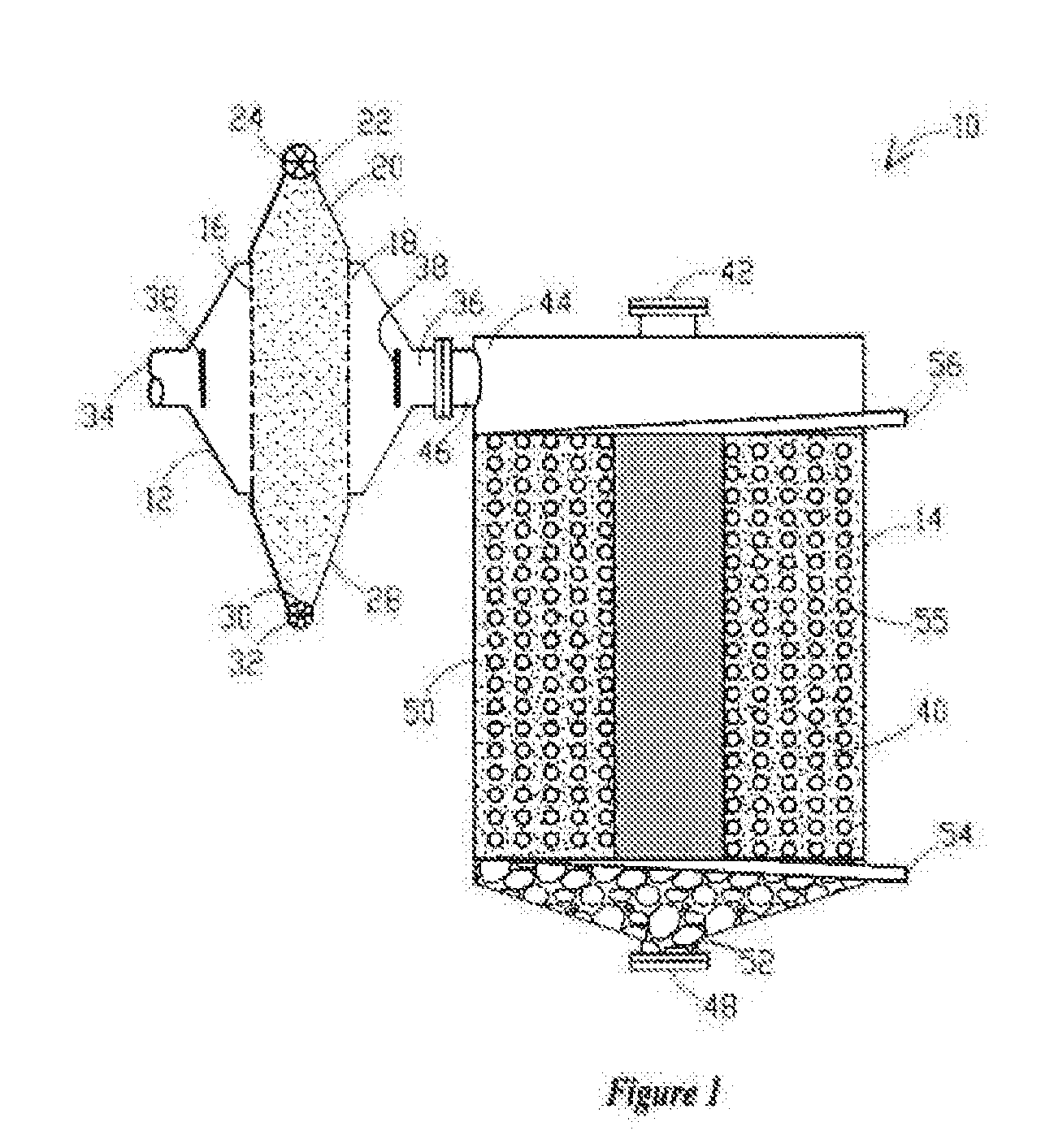Process and Apparatus for Cleaning Raw Product Gas
a technology for cleaning raw products and raw materials, applied in the direction of gas purification with selectively adsorbent solids, gasification process details, etc., can solve the problems of serious problems for the operation of downstream equipment, complex overall gasification process, and a significant component of the overall gasification capital and operating costs
- Summary
- Abstract
- Description
- Claims
- Application Information
AI Technical Summary
Benefits of technology
Problems solved by technology
Method used
Image
Examples
Embodiment Construction
[0037]Embodiments of the present invention relate to a process for cleaning a raw product gas and an apparatus 10, 10′ for cleaning a raw product gas as described with reference to FIGS. 1, 2a and 2b and 3.
[0038]In its broadest form, the process for cleaning a raw product gas comprises the steps of:[0039]a) contacting the raw product gas with a flow of catalyst; and[0040]b) cooling the resulting product gas via heat exchange with a heat exchange medium in the presence of char or a solid adsorbent medium.
[0041]The term ‘raw product gas’ is used herein to refer to a product gas produced by gasifying a carbonaceous material (gasification), in particular a low-rank carbonaceous material such as biomass, that contains contaminants such as tarry residues, condensable light organics, fine particulates, volatilised inorganic species inherent in the carbonaceous material and pollutant-forming species (e.g. NH3, HCN, NOx, SOx, and H2S) which form during gasification.
[0042]Gasification is the ...
PUM
| Property | Measurement | Unit |
|---|---|---|
| Flow rate | aaaaa | aaaaa |
| Length | aaaaa | aaaaa |
| Heat | aaaaa | aaaaa |
Abstract
Description
Claims
Application Information
 Login to View More
Login to View More - R&D
- Intellectual Property
- Life Sciences
- Materials
- Tech Scout
- Unparalleled Data Quality
- Higher Quality Content
- 60% Fewer Hallucinations
Browse by: Latest US Patents, China's latest patents, Technical Efficacy Thesaurus, Application Domain, Technology Topic, Popular Technical Reports.
© 2025 PatSnap. All rights reserved.Legal|Privacy policy|Modern Slavery Act Transparency Statement|Sitemap|About US| Contact US: help@patsnap.com



